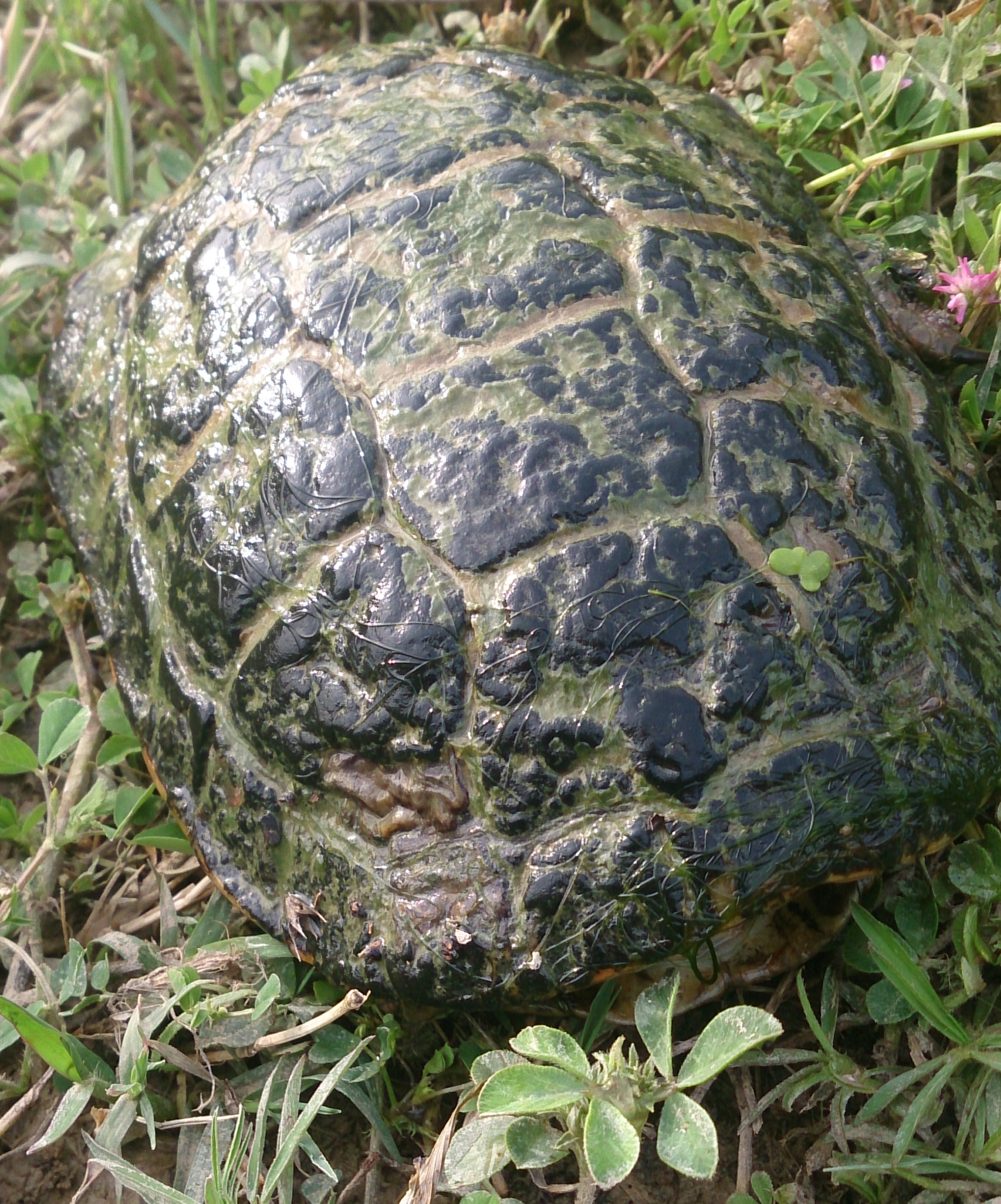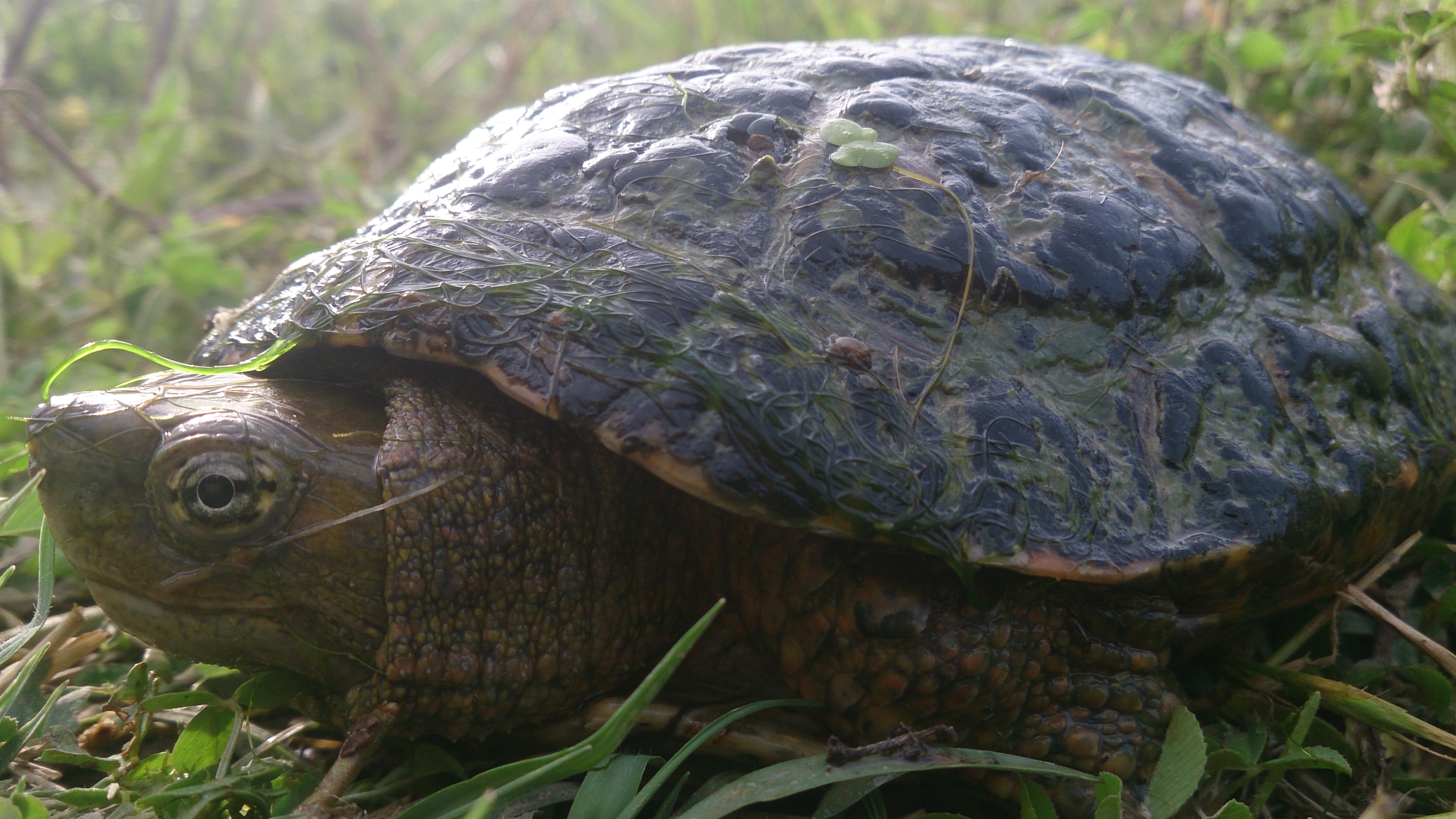
Casi puede confundirse con una piedra en el camino. Se trata de un galápago leproso cuyo nombre científico es Mauremys leprosa. Su desafortunado apelativo de "leproso" se debe a que muchos de ejemplares, especialmente los de mayor longevidad y aquellos que viven en aguas más estancadas o someras presentan algas adheridas en su caparazón además de que esta coraza presenta un crecimiento constante y en ocasiones pueden verse pellejos colgandos del mismo, mostrando cierta similitud a los enfermos de lepra.
It can almost be mistaken for a stone on the road. It is a leper pond turtle whose scientific name is Mauremys leprosa. Its unfortunate nickname of "leper" is due to the fact that many specimens, especially those of greater longevity and those that live in more stagnant or shallow waters, have algae adhered to their shells, in addition to the fact that this shell presents a constant growth and sometimes skin can be seen hanging from it, showing a certain similarity to those suffering from leprosy.

Estos galápagos son tortugas de agua dulce, que podemos encontrar en pantanos, márgenes de ríos, charcas y otros habitat acuáticos. Es frecuente que verlos soleándose en piedras o en orillas y al percatarse de nuestra presencia se refugian sumergiéndose en el agua que tengan más cercana.
These turtles are freshwater turtles, which can be found in swamps, riverbanks, ponds and other aquatic habitats. It is common to see them sunning themselves on rocks or banks and when they become aware of our presence, they take refuge by diving into the nearest water.
Antiguamente se estilaba tener esta clase de reptiles en las casas. Galápagos europeos, leprosos, tortuga mora.....una práctica que a día de hoy está prohibida ya que estos seres donde deben estar en en su hábitat natural.
In the past, it was common to keep these reptiles in houses. European Galapagos, lepers, turtles and tortoises ..... a practice that nowadays is forbidden since these beings should be in their natural habitat.
Del mismo modo, no deberíamos soltar ninguna "mascota" en lugares inapropiados. Las modas de comprar, recolectar o regalar tortugas (como la de florida), cansarse de ellas cuando crecen o se pierde el interés y liberarlas en entornos donde compiten con especies propias del lugar está causando muchos perjucios a la biodiversidad.
Me encantan los animales, pero sobre todo, en su hábitat natural.
Gracias por leerme y por compartir. Saludos!
In the same way, we should not release any "pet" in inappropriate places. The fads of buying, collecting or giving turtles (like the one in Florida), getting tired of them when they grow up or lose interest and releasing them in environments where they compete with local species is causing a lot of damage to biodiversity.
I love animals, but especially in their natural habitat.
Thanks for reading me and for sharing. Best regards!
Translated with www.DeepL.com/Translator (free version)

Fotos realizadas con el móvil.
Congratulations @monycatt! You have completed the following achievement on the Hive blockchain and have been rewarded with new badge(s) :
Your next target is to reach 3250 upvotes.
You can view your badges on your board and compare yourself to others in the Ranking
If you no longer want to receive notifications, reply to this comment with the word
STOPCheck out the last post from @hivebuzz: